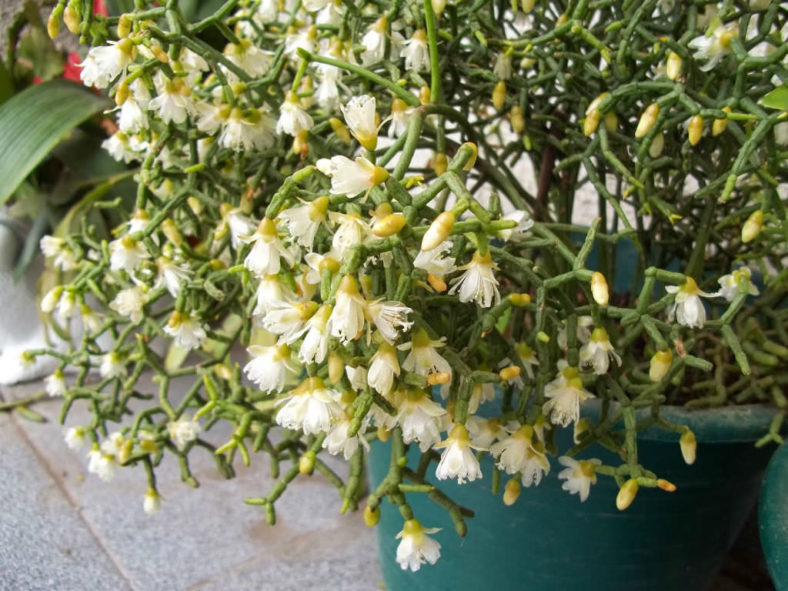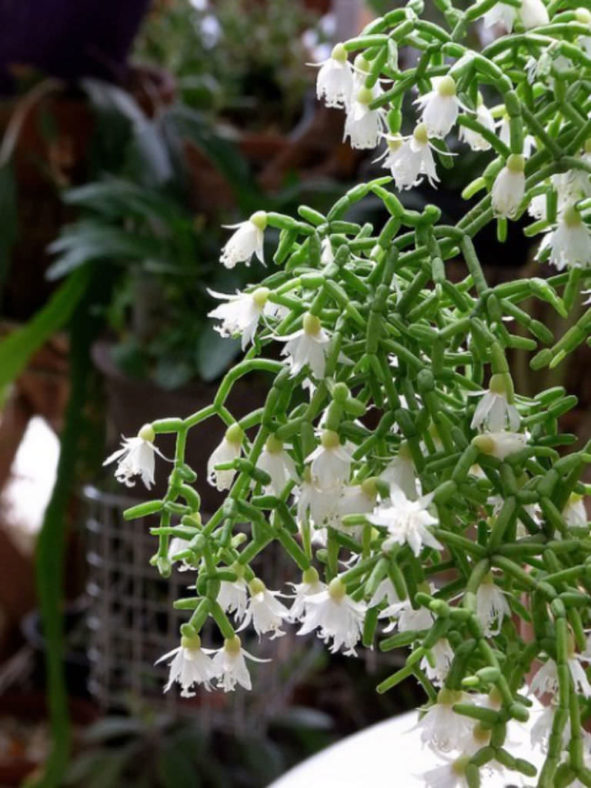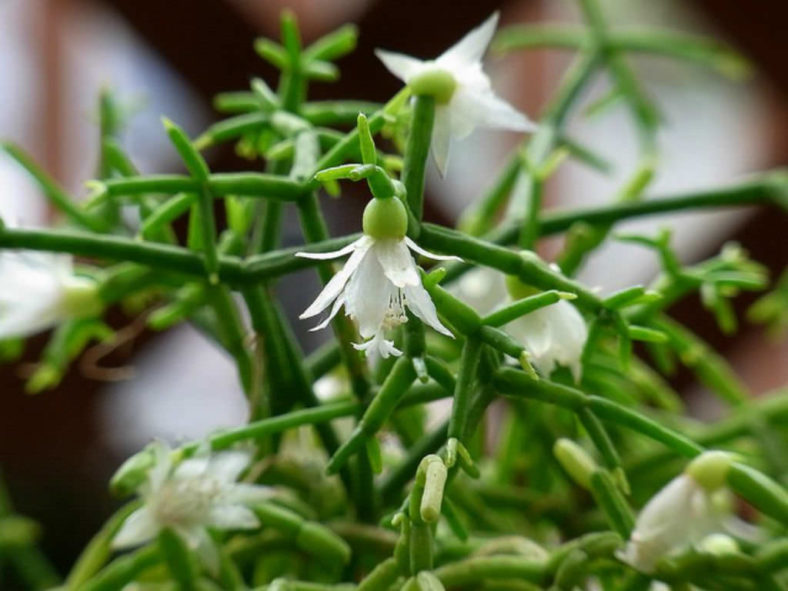Scientific Name
Rhipsalis cereuscula Haw.
Common Name(s)
Coral Cactus, Rice Cactus, Mistletoe Cactus
Synonym(s)
Erythrorhipsalis cereuscula, Hariota cereuscula, Rhipsalis saglionis
Scientific Classification
Family: Cactaceae
Subfamily: Cactoideae
Tribe: Rhipsalideae
Genus: Rhipsalis
Etymology
The specific epithet "cereuscula" (pronounced "ker-ee-USK-yoo-luh") means "small candles" and probably refers to the shape of the stem joints of this species.
Origin
Rhipsalis cereuscula is native to Uruguay and Brazil. It grows as an epiphyte in lowland to submontane tropical moist forests at elevations that range from 660 to 4,600 feet (200 to 1,400 m).
Description
Rhipsalis cereuscula is a shrubby cactus with light green stems crowned with clusters of tiny, rice-shaped joints. The stems are initially erect but become pendant as they grow, reaching a length of up to 3 feet (90 cm).
The greenish-white flowers are often tinged with pink, appear from the terminal areoles, and are followed by tiny, white berries. They are bell-shaped and can grow up to 0.6 inches (1.5 cm) long and 0.8 inches (2 cm) in diameter.

How to Grow and Care for Rhipsalis cereuscula
Hardiness: USDA hardiness zones 10a to 11b: from 30°F (-1.1°C) to 50°F (10°C).
Rhipsalis do not thrive in direct sunlight. Exposure to the afternoon sun can cause the leaves to burn, turn yellow, or develop spotting. However, they will not bloom without sufficient sunlight, and their growth can be stunted. Therefore, these cacti do best with morning sun and full shade in the afternoon.
As Rhipsalis is commonly grown indoors, care must be given to the placement of the plants. They should be kept at least 20 inches (50 cm) from windows that receive midday or afternoon sun. The glass in the windows can multiply the heat from the sun's rays, causing sunburn on the leaves. Keep in mind that in its native environment, Rhipsalis is accustomed to receiving light filtered through dense, overhanging tree branches. Picturing this environment can help you adjust your lighting accordingly.
Rhipsalis is not a drought-resistant plant, so regular watering is essential. Overwatering, however, can cause weak stems and rotted roots. Using a watering can helps you measure the amount of water you are providing. The pot's size compared to the plant's size, the humidity levels in the home, and the type of potting soil used can all affect the watering frequency.
Learn more at How to Grow and Care for Rhipsalis.
Links
- Back to genus Rhipsalis
- Succupedia: Browse succulents by Scientific Name, Common Name, Genus, Family, USDA Hardiness Zone, Origin, or cacti by Genus
Photo Gallery


